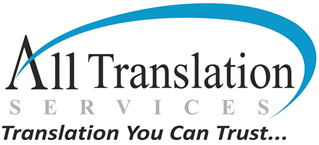Translation vs. Transcreation: What’s Right for Your Business?
___Though these two services may sound similar, they serve very different purposes depending on the context, audience, and marketing intent. Understanding the distinction between translation and transcreation is essential for choosing the right approach to localizing your brand’s message. So how do you decide which one is right for your business?
Need a reliable certified translation services in Abbotsford, Brampton, Calgary or in Edmonton? Our Toronto-based translation company is here to provide top-notch assistance. Reach out today to explore our wide range of translation services!
What is Translation?
Translation is the process of converting content from one language to another, maintaining the original meaning, structure, and tone as closely as possible. It is ideal for documents that require accuracy and consistency, such as legal contracts, technical manuals, financial statements, medical records, and certificates. Professional translation focuses on linguistic precision while preserving the original intent of the message. It is commonly used for content that is formal, neutral, or highly technical in nature, where every word matters and interpretation must be avoided.
What is Transcreation?
Transcreation, or transformative creation, goes beyond word-for-word translation. It is the process of recreating content in another language while adapting it to fit cultural nuances, emotional tone, and the expectations of the target audience. Rather than simply translating, transcreation involves reimagining content to evoke the same response in a different cultural context. It is especially effective for marketing campaigns, advertisements, brand slogans, social media content, website headlines, and product descriptions. For example, a witty English tagline might need to be completely rewritten for a market where the original humor or phrasing would not resonate—or could even be misunderstood.
Key Differences: Translation vs. Transcreation
While both services aim to convey a message across languages, their methods and goals differ significantly. Translation is focused on preserving the original meaning with minimal deviation, making it ideal for official or technical content. Transcreation, on the other hand, allows greater creative freedom to reshape the message so that it aligns with cultural and emotional expectations of the target audience. If your goal is accuracy, translation is the route. If your goal is connection and persuasion, transcreation is the way to go.
When Should You Use Translation?
Translation is the right choice when the content is informational or instructional in nature, and where accuracy is critical. This includes documents such as user manuals, legal agreements, academic transcripts, and medical reports. These materials must retain their exact meaning, as even slight deviations could lead to compliance issues or misunderstandings. Translation ensures consistency in terminology and is essential when the legal or official value of the content must be preserved.
When Should You Use Transcreation?
Transcreation is ideal when your content aims to make an emotional or cultural impact. This includes advertising copy, campaign taglines, video scripts, and promotional materials. If you’re entering a new market where the original message may not land effectively due to cultural or linguistic differences, transcreation helps you recreate that message so it resonates locally. It is especially useful when humor, idioms, tone, or cultural references are involved, as these often do not translate directly.
Which One is Right for Your Business?
Choosing between translation and transcreation depends entirely on the goals of your content. If you are dealing with legal or technical documents, translation is the appropriate solution. However, if you are building your brand presence, launching a new product, or trying to emotionally engage an international audience, transcreation will better serve your needs. In many cases, a combination of both may be necessary. For example, your company website might require precise translations for policy or FAQ pages, and transcreation for the homepage or advertising banners.
Partner with a Language Expert You Can Trust
Being an ATIO certified language translation services provider in Oakville, we understand the difference between translation and transcreation—and more importantly, we know when each one is needed. With over two decades of experience, we offer both accurate translations and culturally relevant transcreations across more than 80 languages. Our network of professional linguists includes certified translators, marketing copywriters, and localization specialists, all working together to ensure that your message is clear, impactful, and well-adapted for any audience.
Whether you need legal precision or creative storytelling, we are here to help you communicate confidently across borders. Contact us today to learn more about our language translation and transcreation services.
